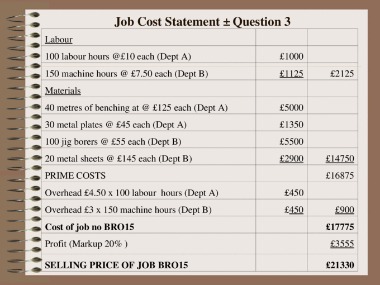Content

For example, a loss on sale of equipment is added to income because the loss reduces income but does not result in an outflow of cash. Several unique transactions that require adjustments to income were identified in the review of reports. The items may be infrequently encountered but CPAs should be alert to identify circumstances requiring adjustment of income to correctly report cash flows from operating activities. These statements fit together to form a comprehensive financial picture of the business. The balance sheet or net worth statement shows the solvency of the business at a specific point in time. Statements are often prepared at the beginning and ending of the accounting period (i.e. January 1).
- In the earnings of the investee, and dividends received by the investor.
- Conversely, if EBIT falls below $24 million, the interest coverage ratio of less than 3 signals that the company may have a hard time staying solvent as an interest coverage of less than 3 times is often seen as a «red flag.»
- Interest paid is the amount of cash that company paid to the creditor.
- This type of loan is sometimes called the «lump sum» loan, and is generally repaid in less than a year.
- They’re usually salaries payable, expense payable, short term loans etc.
- Put simply, your company’s cash flow statement demonstrates how your business generated and used its cash.
Interest expense will link to the income statement in precisely the same way it does in an annual model, and now the Interest Accrued line item can link to Accrued Interest on the Balance sheet. Capitalized interest is the cost of borrowing to acquire or construct a long-term asset, which is added to the cost basis of the asset on the balance sheet. The loan’s purpose is also critical in determining tax-deductibility of interest expense.
Definition of Interest Expense
The cash flow statement reveals the quality of a company’s earnings (i.e. how much came from cash flow as opposed to accounting treatment), and the firm’s capacity to pay interest and dividends. In analyzing the retained earnings account, the other activity is the net income. The cash activities related to generating net income are included in the operating activities section of the statement of cash flows, and therefore, are not included in the financing activities section.
Would interest paid on a note be reported on the statement of cash flows?
The interest paid on a note payable is reported in the section of the cash flow statement entitled cash flows from operating activities.
In the business operation, we may use either loan or equity to make new investments. We can request loans or issuing debt security into the market such as bonds. When we receive loans from banks, financial institutes, or other creditors, we need to pay interest for them.
What Is Interest Expense?
Further, the interest incurred is determined by the outstanding principal on each debt instrument. Interest expense is a crucial aspect of a business’s financial health, as it represents the cost of borrowing money. This cost can have a significant impact on a company’s profitability, and as such, it is important for business owners and managers to understand how interest expense is calculated and recorded. Interest expense is a period expense, so it appears in each period on your income statement in a financial model.
- Accounts receivable decreased by $663 because the company received more cash from its customers than credit sales made by the company.
- Cash collections from customers This consists of sales made for cash and cash collected from credit customers.
- Evaluation of successful businesses has found that many of them operate with 50 percent or more rented or borrowed capital.
- Under the accrual method of accounting, interest expense is reported on a company’s income statement in the period in which it is incurred.
To forecast interest expense in a financial model, the standard convention is to calculate the amount based on the average between the beginning and ending debt balances from the balance sheet. It’s also worth mentioning that in some cases the interest How Do The Paid Interest Expenses Present In The Statement Of Cash Flow? expense can be calculated using the average outstanding balance of the loan instead of the outstanding balance at the end of the period. For example, a company with $100 million in debt at 8% interest has $8 million in annual interest expense.
Is Interest Expense an Asset?
Thus, the borrower is required to pay interest only on the actual amount of money outstanding and only for the actual time the money is used (e.g. 30 days, 90 days, 4 months and 2 days, 12 years and one month). Intermediate-term loans are credit extended for several years, usually one to five years. This type of credit is normally used for purchases of buildings, equipment and other production inputs that require longer than one year to generate sufficient returns to repay the loan. It is the right to incur debt for goods and/or services and repay the debt over some specified future time period. Credit provision to a company means that the business is allowed the use of a productive good while it is being paid for.

Under the indirect method, income is adjusted for noncash expenses such as depreciation, depletion, and amortization of operational assets. Income is also adjusted for changes in selected components of current assets and current liabilities that are related to operating activities. For example, companies adjust income for cash inflows or outflows related to changes in accounts receivable, https://kelleysbookkeeping.com/ inventory, prepaid items, accounts payable and accrued liabilities. The cash flow statement uses information from your company’s income statement and balance sheet to show whether or not your business succeeded in generating cash during the period defined in the report’s heading. Put simply, your company’s cash flow statement demonstrates how your business generated and used its cash.
Business in Action 12.2
Amortised loans are a partial payment plan where part of the loan principal and interest on the unpaid principal are repaid each year. Single payment loans are those loans in which the borrower pays no principal until the amount is due. Because the company must eventually pay the debt in full, it is important to have the self-discipline and professional integrity to set aside money to be able to do so. This type of loan is sometimes called the «lump sum» loan, and is generally repaid in less than a year.
- 1) Identify them as sources and applications of funds, and arrange them in a proper manner with the Sources of funds on the left and the Applications on the right of a tabulated statement for the said period.
- Under IFRS, there are two allowable ways of presenting interest expense or income in the cash flow statement.
- A discussion of cash flows should probably begin with the selection of the income statement item that starts the computation of cash flows from operating activities.
- Non-operating expenses are then deducted, which can quickly show owners how debt is affecting their company’s profitability.
- People often mistakenly believe that a cash flow statement will show the profitability of a business or project.
